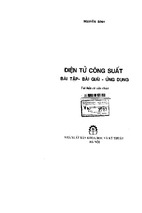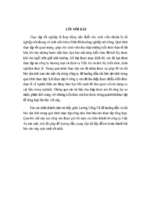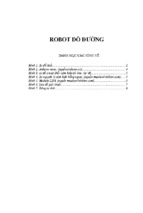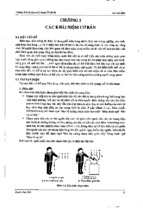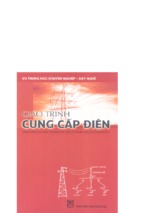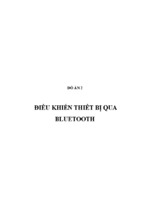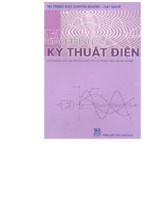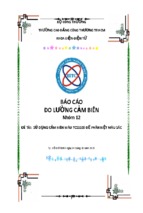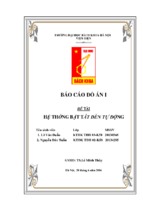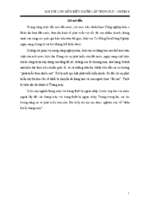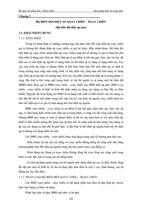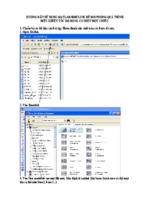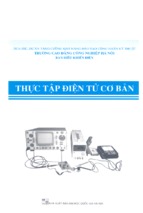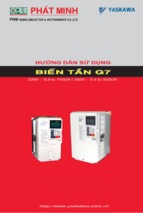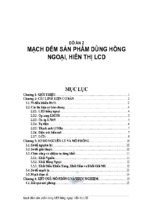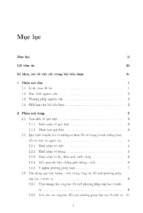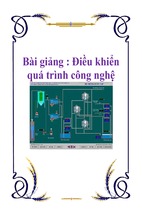SOFTSTARTER
HANDBOOK
FOREWORD
This book is written with the thought of being a general guide for people working with
softstarter applications but also for those just interested in learning more about this type
of starting method. It doesn’t matter if you are an expert or novice, hopefully you will find
some interesting and useful information either by reading from cover to cover or just the
chapters of interest.
The index at the end of the book can be used to simplify your search.
The content of this book is very much based on the 20 years of experience we have within
ABB of developing, manufacturing and selling low voltage softstarters.
The book is not a complete technical guide or manual for all type of ABB Softstarters that
may exist on the market. It is a complement to the technical catalogues and brochures we
have for our products and will give a general picture of what to think about when working
with softstarters.
More information about softstarters as well as other ABB products is available on www.abb.com
All advice given in this book is only general and every single application must be handled
as a specific case.
ABB Automation Technology Products AB, Control
February 2003
Magnus Kjellberg
Sören Kling
ABB will not take any responsibility for any type of faults or damage due to the use of this
handbook.
Contents
European Directives
CE Marking
Specification in USA and Canada
Used standards
General about motors
Squirrel cage motors
Voltage
Power factor
Speed
Torque
Slip-ring motors
Different starting methods
Direct-on-line start (D.O.L)
Star-delta start
Frequency converter
Softstarter
Common problem when starting and stopping motors
Different applications
...1
...1
...1
...1
...1
Contents
Standards
...2
...3
...4
...5
...6
...7
...7
...8
...9
...10
...12
...13
...14
...15
Centrifugal fan
Direct-on-line start (D.O.L)
Star-delta start
Softstarter
Selection of a suitable Softstarter
...16
...16
...17
...17
...18
Centrifugal pump
Direct-on-line start (D.O.L)
Star-delta start
Softstarter
Selection of a suitable Softstarter
...19
...19
...20
...21
...22
I
Contents
II
Compressor
Direct-on-line start (D.O.L)
Star-delta start
Softstarter
Selection of a suitable Softstarter
...23
...23
...24
...25
...26
Conveyor belt
Direct-on-line start (D.O.L)
Star-delta start
Softstarter
Selection of a suitable Softstarter
...27
...27
...28
...29
...30
How to select a softstarter
...31
Description of the softstarters
...33
Description of different components
...34
Common settings
Start ramp
Stop ramp
Initial voltage
Current limit
Step down voltage
Adjustable rated motor current
...36
...36
...36
...36
...37
...38
...38
Different indications
...39
Different voltage names
...40
Ambient temperature
...41
High altitudes
Start of several motors
...42
...43
Parallel start of motors
Sequential start of motors
...43
...44
In-Line connection
Inside Delta connection
Location of the main contactor
Basic settings
Table for settings without current limit function
Table for settings with current limit function
Starting capacity and overload protection
Starting capacity for softstarters
Starting capacity when using by-pass contactor
Starting capacity when using overload protection
Number of starts/hour
Intermittance factor
Harmonics
Harmonic content
...45
...46
...46
...47
...49
...50
...51
...52
...52
...53
...53
...54
...54
...55
...55
Explosive atmospheres (EEx)
...56
Hazardous areas and zones
Location and selection of softstarter
...57
...57
Co-ordination
Types of co-ordination
Utilization Categories
Types of fuses
Where to find the co-ordination tables
How to read the co-ordination tables
ESD aspects
Two type of faults and different circuits
Electro static voltage levels
Protection against ESD damages
Contents
Different ways of connecting the softstarter
...58
...59
...60
...61
...62
...63
...65
...65
...66
...66
III
Contents
Frequently Asked Questions (FAQ)
...67
Environmental information
...69
LCA
EPD
Industrial IT
...71
Different levels
Softstarter level
...72
...72
Formulas and conversion factors
Formulas
Quantities and units
Conversion factors
IV
...69
...70
...73
...73
...75
...76
Glossary
...78
Index
...84
Standards
European Directives
There are three essential European directives:
Low Voltage Directive 73/23/EEC
Concerns electrical equipment from 50 to
1000 V AC and from 75 to 1500 V DC.
Machines Directive 89/392/EEC
Concerns safety specifications of machines
and equipment on complete machines.
Electromagnetic Compatibility Directive
89/336/EEC
Concerns all devices able to create electromagnetic disturbance including the level of
emission and immunity.
CE Marking
When a product is verified according to its
applicable EN standard (EN 60947-4-2 for
softstarters) the product will then fulfil both the
”Low Voltage Directive” and ”Electromagnetic
Compability Directive” and it is allowed to use
the CE marking on the product. In this case
the CE marking does not cover the ”Machines
Directive” concerning the connection of the
softstarter for a safe run of the motor.
The CE marking is not a quality label; it is proof
of conformity with the European Directives
concerning the product.
Standards
All ABB low voltage softstarters are developed and manufactured according to the rules
set out in the IEC (International Electrotechnical Commission) which is a part of the
International Standard Organisation, ISO.
ISO issue IEC publications that act as a basis for the world market.
Softstarters built according to these standards are in most countries not subject to
any other tests besides the manufacturer responsibility. In some countries, law requires
certificates.
For softstarters used on board ships, maritime insurance companies sometimes require
certificates of approval from BV (Bureau Veritas), GL (Germanisher Lloyd) and LRS
(Lloyd’s Register of Shipping) or other independent certification organisation.
Specifications in USA and
Canada
The specifications for the American and
Canadian markets are quite equal but differ a
lot from the IEC standards and other European
specifications.
USA
UL
Canada CSA
Underwriters Laboratories
File ref. 072301-E161428
110800-E161428
Canadian Standards
File ref. 1031179
Used standards
Following standards are used or partly used for
the softstarters.
IEC 60947-1
IEC 60947-4-2
EN 60947-1
EN 60947-4-2
UL 508
CSA C22.2 No. 14 - M91
LRS 00/00154
1
About Motors
About Motors
2
Modern electrical motors are available in many different forms, such as single phase
motors, three-phase motors, brake motors, synchronous motors, asynchronous motors,
special customised motors, two speed motors, three speed motors, and so on, all with
their own performance and characteristics.
For each type of motor there are many different mounting arrangements, for example
foot mounting, flange mounting or combined foot and flange mounting. The cooling
method can also differ very much, from the simplest motor with free self-circulation of
air to a more complex motor with totally enclosed air-water cooling with an interchangeable
cassette type of cooler.
To ensure a long lifetime for the motor it is important to keep it with the correct
degree of protection when under heavy-duty conditions in a servere environment.
The two letters IP (International Protection) state the degree of protection followed
by two digits, the first of which indicates the degree of protection against contact
and penetration of solid objects, whereas the second states the motor’s degree of
protection against water.
The end of the motor is defined in the IEC-standard as follows:
• The D-end is normally the drive end of the motor.
• The N-end is normally the non-drive end of the motor.
Note that in this handbook we will focus on asynchronous motors only.
Terminal box
Cooling fan
Drive shaft
D-end
N-end
Stator windings
Stator
Rotor
In this book the focus has been placed on the
squirrel cage motor, the most common type of
motor on the market. It is relatively cheap and
the maintenance cost is normally low. There are
many different manufacturers represented on the
market, selling at various prices. Not all motors
have the same performance and quality as for
example motors from ABB. High efficiency
enables significant savings in energy costs during
the motor’s normal endurance. The low level of
noise is something else that is of interest today,
as is the ability to withstand severe environments.
There are also other parameters that differ.
The design of the rotor affects the starting current
and torque and the variation can be really large
between different manufacturers for the same
power rating. When using a softstarter it is
good if the motor has a high starting torque at
Direct-on-line (D.O.L) start. When these motors
are used together with a softstarter it is possible to
reduce the starting current further when compared
to motors with low starting torque. The number
of poles also affects the technical data. A motor
with two poles often has a lower starting torque
than motors with four or more poles.
About Motors
Squirrel cage motors
3
I
Max. starting current
Max. torque
T
Starting torque
Rated current
rpm
Current diagram for typical sqirrel cage motor
Rated torque
rpm
Torque diagram for a typical squirrel cage motor
About Motors
Voltage
Three-phase single speed motors can normally
be connected for two different voltage levels.
The three stator windings are connected in star
(Y) or delta (D).
The windings can also be connected in series or
parallel, Y or YY for instance. If the rating plate
on a squirrel cage motor indicates voltages for
both the star and delta connection, it is possible
to use the motor for both 230 V, and 400 V as an
example.
The winding is delta connected at 230 V and if
the main voltage is 400 V, the Y-connection is
used.
When changing the main voltage it is important
to remember that for the same power rating the
rated motor current will change depending on the
voltage level.
The method for connecting the motor to the
terminal blocks for star or delta connection is
shown in the picture below.
L1
L1
W2
U1
U1
U2
4
W1
U2
L3
L2
V2
W2
U1
V1
U2
V1
L1
L2
V2
W1
L3
– Connection
230 V
(400 V)
Wiring diagram for Y- and Delta connection
V2
W2
V1
L2
L3 W1
W2
U1
U2
V1
L1
L2
V2
W1
L3
Y – Connection
400 V
(690 V)
A motor always consumes active power, which it
converts into mechanical action. Reactive power
is also required for the magnetisation of the motor
but it doesn’t perform any action. In the diagram
below the active and reactive power is represented
by P and Q, which together give the power S.
The ratio between the active power (kW) and the
reactive power (kVA) is known as the power
factor, and is often designated as the cos ϕ. A
normal value is between 0.7 and 0.9, when
running where the lower value is for small motors
and the higher for large ones.
About Motors
Power factor
S
P
5
ϕ
Q
Diagram indicating P, Q, S and Cos ϕ
About Motors
Speed
The speed of an AC motor depends on two things:
the number of poles of the stator winding and
the main frequency. At 50 Hz, a motor will run
at a speed related to a constant of 6000 divided
by the number of poles and for a 60 Hz motor
the constant is 7200 rpm.
To calculate the speed of a motor, the following
formula can be used:
n = 2 x f x 60
p
n = speed
f = net frequency
p = number of poles
The difference between the synchronous and
asynchronous speed also named rated speed is
”the slip” and it is possible to calculate this by
using the following formula:
n -n
s= 1
n1
s = slip (a normal value is between 1 and 3 %)
n1 = synchronous speed
n = asynchronous speed (rated speed)
Table for synchronous speed at different
number of poles and frequency:
No. of poles
50 Hz
60 Hz
2
3000
3600
4
1500
1800
6
1000
1200
8
750
900
10
600
720
12
500
600
16
375
450
20
300
360
Example:
4-pole motor running at 50 Hz
6
n = 2 x 50 x 60 = 1500 rpm
4
This speed is the synchronous speed and a
squirrel-cage or a slip-ring motor can never
reach it. At unloaded condition the speed will
be very close to synchronous speed and will
then drop when the motor is loaded.
T
Rated speed
Syncronous
speed
}
Slip rpm
Diagram showing syncronous speed vs.rated speed
Slip-ring motors
The starting torque for a motor differs significantly
depending on the size of the motor. A small
motor, e.g. ≤ 30 kW, normally has a value of
between 2.5 and 3 times the rated torque, and
for a medium size motor, say up to 250 kW, a
typical value is between 2 to 2.5 times the rated
torque. Really big motors have a tendency to have
a very low starting torque, sometimes even lower
than the rated torque. It is not possible to start
such a motor fully loaded not even at D.O.L
start.
In some cases when a D.O.L start is not permitted
due to the high starting current, or when starting
with a star-delta starter will give too low starting
torque, a slip-ring motor is used. The motor is
started by changing the rotor resistance and when
speeding up the resistance is gradually removed
until the rated speed is achieved and the motor
is working at the equivalent rate of a standard
squirrel-cage motor.
The rated torque of a motor can be calculated
using the following formula:
9550 x Pr
Mr =
nr
Mr = Rated torque (Nm)
Pr = Rated motor power (kW)
nr = Rated motor speed (rpm)
T
The advantage of a slip-ring motor is that the
starting current will be lower and it is possible to
adjust the starting torque up to the maximum
torque.
In general, if a softstarter is going to be used for
this application you also need to replace the motor.
7
T
rpm
Tst/Tn1.5...2.5
Torque diagram for a slip-ring motor
I
Tn
rpm
Torque diagram for a typical squirrel cage motor
About Motors
Torque
rpm
Current diagram for a slip-ring motor
Different starting methods
Different starting methods
The following is a short description of the most common starting methods for
squirrel cage motors.
An overview of common problems when starting and stopping a motor with different
starting methods, see page 14
Direct-on-line start (D.O.L)
Frequency converter
Start-delta start
Softstarter
8
This is by far the most common starting method
available on the market. The starting equipment
consists of only a main contactor and thermal or
electronic overload relay. The disadvantage with
this method is that it gives the highest possible
starting current. A normal value is between 6 to 7
times the rated motor current but values of up to
9 or 10 times the rated current exist. Besides the
starting current there also exists a current peak
that can rise up to 14 times the rated current
since the motor is not energised from the the first
moment when starting.
The values are dependent on the design and size
of the motor, but in general, a smaller motor
gives higher values than a larger one.
During a direct-on-line start, the starting torque
is also very high, and is higher than necessary for
most applications. The torque is the same as the
force, and an unnecessary high force gives
unnecessary high stresses on couplings and the
driven application. Naturally, there are cases
where this starting method works perfectly and
in some cases also the only starting method that
works.
Different starting methods
Direct-on-line start (D.O.L)
Max. torque
T
Starting torque
9
KM 1
Rated torque
FR 1
rpm
Torque/speed curve att D.O.L start
I
Max. starting current
M
D.O.L. starter with contactor
and O/L relay
KM 1
FR 1
Single line diagram
for a D.O.L.
Main contactor
Overload relay
Rated current
rpm
Current curve at D.O.L start
Different starting methods
10
Star-delta start
This is a starting method that reduces the starting
current and starting torque. The device normally
consists of three contactors, an overload relay and
a timer for setting the time in the star-position
(starting position). The motor must be delta
connected during a normal run, in order to be
able to use this starting method.
The received starting current is about 30 % of
the starting current during direct on line start and
the starting torque is reduced to about 25 % of
the torque available at a D.O.L start. This starting
method only works when the application is light
loaded during the start. If the motor is too heavily
loaded, there will not be enough torque to
accelerate the motor up to speed before switching
over to the delta position.
When starting up pumps and fans for example,
the load torque is low at the beginning of the
start and increases with the square of the speed.
When reaching approx. 80-85 % of the motor
rated speed the load torque is equal to the motor
torque and the acceleration ceases. To reach the
rated speed, a switch over to delta position is
necessary, and this will very often result in high
transmission and current peaks. In some cases the
current peak can reach a value that is even bigger
than for a D.O.L start. Applications with a load
torque higher than 50 % of the motor rated torque
will not be able to start using the start-delta starter.
KM 3
400 V
KM 1
230 V
KM 1
KM 2
KM 3
FR 1
M
FR 1
Star-delta starter with contactors and O/L relay
KM 1
KM 2
KM 3
FR 1
Single line diagram for a Star-delta starter
Different starting methods
KM 2
Main contactor
Delta contactor
Star contactor
Overload relay
11
I
T
rpm
rpm
Torque/speed curve at Star-Delta start
Current curve at Star-Delta start
Different starting methods
Frequency converter
The frequency converter is sometimes also
called VSD (Variable Speed Drive), VFD
(Variable Frequency Drive) or simply Drives,
which is probably the most common name.
The drive consists primarily of two parts, one
which converts AC (50 or 60 Hz) to DC and the
second part which converts the DC back to AC,
but now with a variable frequency of 0-250 Hz.
As the speed of the motor depends on the
frequency this makes it possible to control the speed
of the motor by changing the output frequency
from the drive and this is a big advantage if there
is a need for speed regulation during a continuous
run.
In many applications a drive is still only used
for starting and stopping the motor, despite the
fact that there is no need for speed regulation
during a normal run. Of course this will create a
need for much more expensive starting equipment
than necessary.
By controlling the frequency, the rated motor
torque is available at a low speed and the starting
current is low, between 0.5 and 1.0 times the
rated motor current, maximum 1.5 x In .
Another available feature is softstop, which is
very useful, for example when stopping pumps
where the problem is water hammering in the
pipe systems at direct stop. The softstop function
is also useful when stopping conveyor belts from
transporting fragile material that can be damaged
when the belts stop too quickly.
It is very common to install a filter together with
the drive in order to reduce the levels of emission
and harmonics generated.
12
KM 1
Q1
AC
Q1
Main contactor
Frequency converter
DC
DC
AC
KM 1
M
Frequency converter
Single line diagram for a frequency converter
A softstarter has different characteristics to the
other starting methods. It has thyristors in the
main circuit, and the motor voltage is regulated
with a printed circuit board. The softstarter makes
use of the fact that when the motor voltage is low
during start, the starting current and starting
torque is also low.
During the first part of the start the voltage to
the motor is so low that it is only able to adjust
the play between the gear wheels or stretching
driving belts or chains etc. In other words,
eliminating unnecessary jerks during the start.
Gradually, the voltage and the torque increase
so that the machinery starts to accelerate.
One of the benefits with this starting method is
the possibility to adjust the torque to the exact
need, whether the application is loaded or not. In
principle the full starting torque is available, but
with the big difference that the starting procedure
is much more forgiving to the driven machinery,
with lower maintenance costs as a result.
Another feature of the softstarter is the softstop
function, which is very useful when stopping
pumps where the problem is water hammering
in the pipe system at direct stop as for star-delta
starter and direct-on-line starter.
The softstop function can also be used when
stopping conveyor belts to prevent material
from damage when the belts stop too quickly.
Different starting methods
Softstarter
13
KM 1
FR 1
Q1
KM 1
FR 1
Q1
M
Softstarter
Single line diagram for a softstarter
Main contactor
Overload relay
Softstarter
- Xem thêm -

